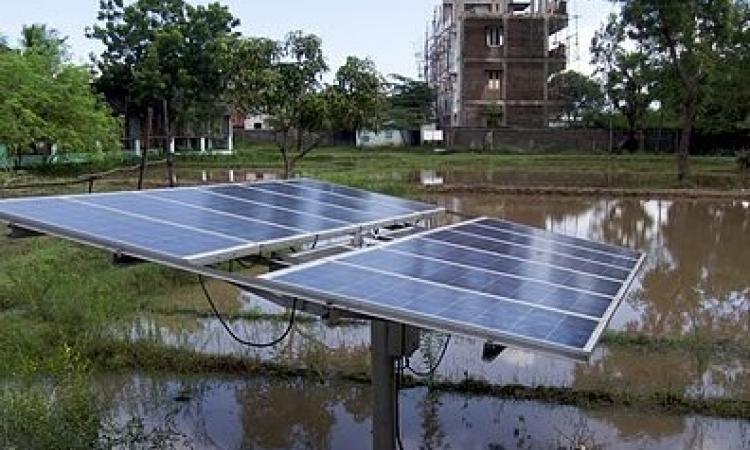
Solar energy, which was until now only considered for small scale lighting is now slowly gaining tremendous popularity among farmers to pump irrigation water. The paper titled 'Karnataka’s smart, new solar pump policy for irrigation' published in the Economic and Political Weekly, provides a background on the current groundwater irrigation situation in the country, the potential threat that solar pumps can pose for overexploitation of groundwater, and the best way to meet this threat.
Potential to grow solar power to augment farm income in India
The paper informs that despite having the world’s largest canal irrigation network, India largely depends on groundwater for irrigation. Farmers use electric and diesel water extracting mechanisms (WEMs) to draw groundwater to irrigate over 67 million ha/year of gross cropped area, and a supplemental source for an additional over 16 million ha/year.
Solar irrigation pumps (SIPs) have been hailed as a one stop solution to meet the irrigation needs of the farmers due to being able to provide sustainable energy at a cheap price but these very advantages could prove to be a threat to the groundwater situation in the country. Globally, the prices of solar panels are falling, which will make solar pumps affordable with little or no subsidy in the future. Once installed, solar power cannot be rationed. Therefore the surplus free power could further intensify groundwater exploitation -- even more than what free electricity has done so far.
The paper argues that the best way to meet this threat could be by paying farmers to “grow” solar power as a remunerative cash crop. This would reduce pressure on aquifers, cut the subsidy burden on electricity companies, reduce the carbon footprint of agriculture and improve farm incomes in the long run.
Karnataka's Surya Raitha scheme
The Surya Raitha scheme precisely does this. It offers guaranteed buy back of surplus solar power from SIP owners at an attractive Feed in Tariff (FiT). It aims at:
- Improving livelihoods by providing farmers cash incomes for “growing” solar energy as a remunerative cash crop
- Conserving the environment through incentives to conserve groundwater and energy used in pumping
- Enhancing the quality of irrigation by providing farmers reliable, uninterrupted, daytime power supply
- Reducing the carbon footprint of groundwater irrigation by reducing the use of electricity and diesel for pumping water
- Improving finances of the power sector by providing electricity distribution companies (DISCOMs) freedom from the deadweight of farm power subsidies
- Reducing transmission and distribution (T&D) losses by replacing grid power by locally generated power
The paper argues that a smart solar pump promotion strategy will however need careful running in and implementation. To be successful, the Surya Raitha scheme should:
- Give priority to farmers who are willing to surrender their grid connection in place of a subsidised SIP because solarising grid-connected irrigation pumps is the best way of reducing the subsidy burden on DISCOMs
- Receive enhanced annual funds from the government
- Focus on minimising room for malpractice
Please download a copy of the paper below.